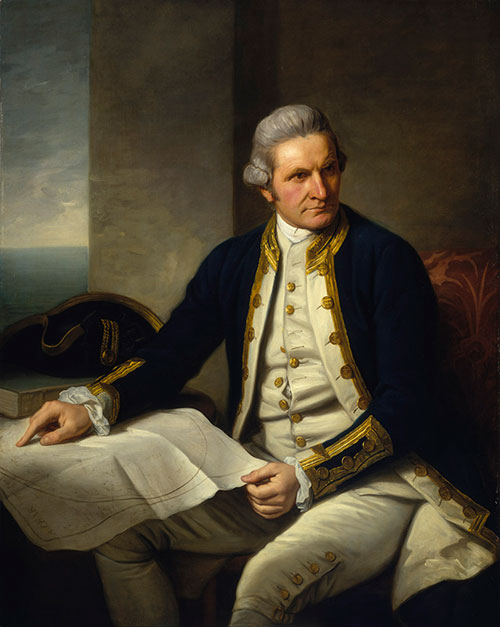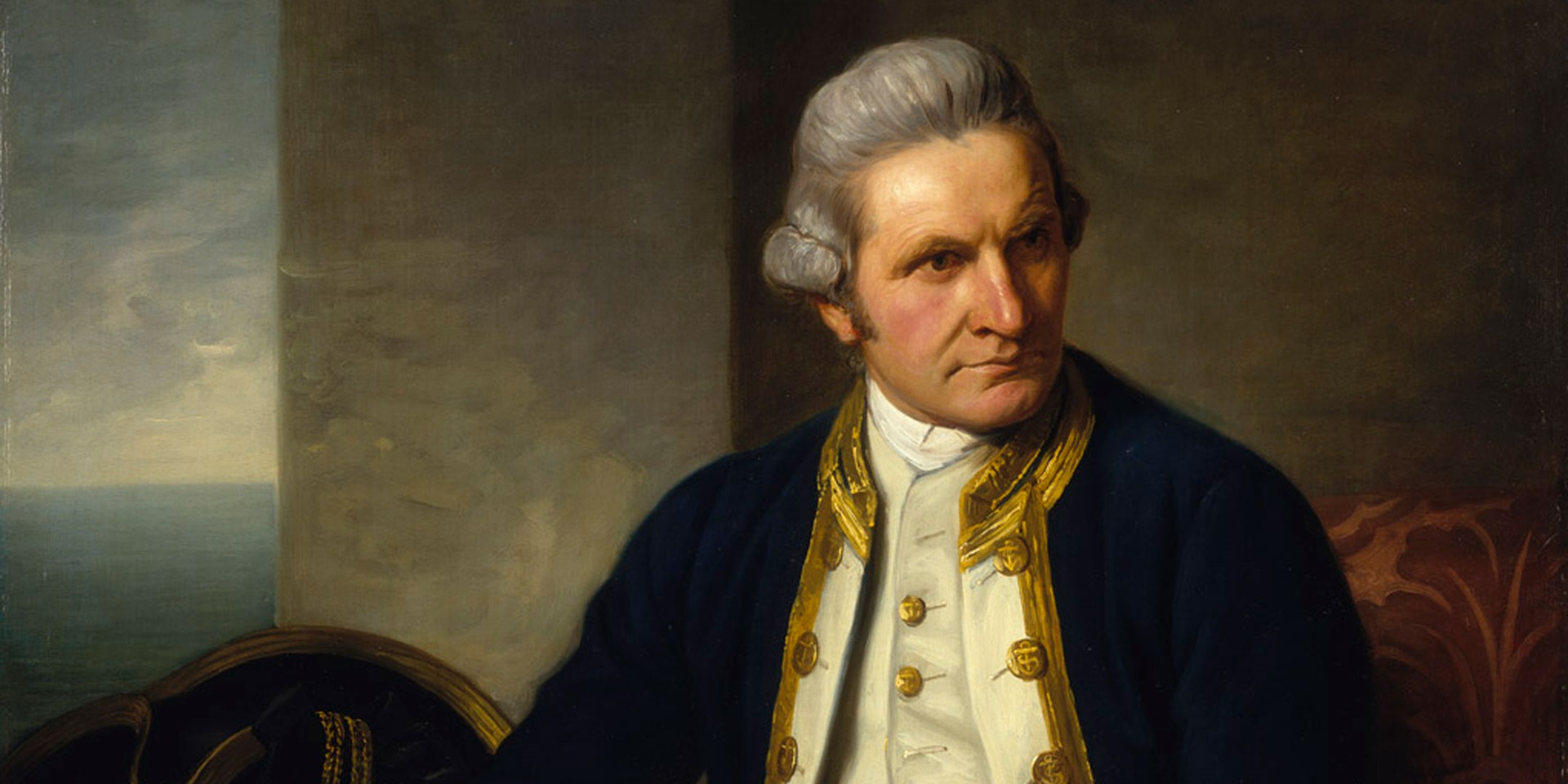Key inquiry questions:
• Why Cook?
• How should Cook be remembered?
Commanding the Endeavour
James Cook was born in a small Yorkshire village in England. He was the son of a Scottish day labourer. As a boy he showed an aptitude for Mathematics and came to the attention of the lord of the local manor who paid for Cook's education at Postgate School, a charity school in Great Ayton. In 1747 he was apprenticed to the shipowner James Walker and for nine years worked on colliers taking coal around the North Sea, English Channel, Irish Sea and Baltic Sea.
At age 27 he joined the Royal Navy with the rank of Able Seaman. During the war with France he sailed the Atlantic and learnt the art of surveying using astronomy and trigonometry. He returned to England at the end of the war and married 21-year-old Elizabeth Batts. Cook then left for Newfoundland and won fame, and better pay, as a surveyor. He also won respect with the Royal Society for his astronomical observations. On 15th April 1768, the Admiralty appointed James Cook to the rank of First Lieutenant and gave him command of His Majesty's Bark Endeavour.

Official portrait of Captain James Cook, 1776. National Maritime Museum, United Kingdom
On August 26, 1768 Cook set sail for a voyage of exploration that would change the world. Cook wrote in his journal: 'At 2pm got under sail and put to sea having on board 94 persons including Officers Seaman Gentlemen and their servants, near 18 months provisions, 10 carriage guns 12 Swivels with good store of Ammunition and stores of all kinds.'
Cook's first voyage began in Tahiti to observe the transit of Venus. On completion, Cook opened the Admiralty's secret instructions that sent him in search of the great southern continent. His search led him to New Zealand where he charted the two islands and to the east coast of Australia. He landed in Kamay/Botany Bay on April 29, 1770. He continued north charting the eastern coast. On August 22, 1770 at Possession Island Cook claimed the east coast of Australia for Britain. In his journal he wrote;
'Notwithstand[ing] I had in the Name of his Majesty taken posession of several places upon this coast I now once more hoisted English Coulers and in the Name of His Majesty King George the Third took posession of the whole Eastern Coast from … Latitude [38° South] down to this place by the Name of New South Wales together with all the Bays, Harbours Rivers and Islands situate upon the said coast after which we fired three Volleys of small Arms which were Answerd by the like number from the Ship.'
He did this using the principle of terra nullius and changed the course of history.
Remembering Cook
Cook recorded his experiences and observations of the people and places he encountered in his journals. His accounts of the first voyage provide insight into his thoughts and actions and is one of the earliest written records of the Indigenous peoples of Polynesia, New Zealand and eastern Australia.
On his return to England in 1771, Cook was a celebrity and statues were erected in his honour. His contributions to European navigation, exploration and science led to his promotion to Captain and he was entrusted with two further voyages of exploration in the following years. At the time of his death in Hawaii in 1779, his reputation had grown so much that there was a public outpouring of grief.
His legacy lies in his action to claim Australia and the maps he produced and how they were used by the Europeans that followed. His maps were used by Arthur Philip when he sailed the First Fleet to Sydney Cove in 1788 and established a British colony in Australia on behalf of King George III. This changed the lives of Aboriginal and Torres Strait Islander peoples forever, resulting in the destruction of cultures, histories and languages. His actions and their effects during his first and subsequent voyages of exploration continue to this day.
How should Cook be remembered?
How are monuments to Cook viewed by different people?
Gallery of journal excerpts for analysis
